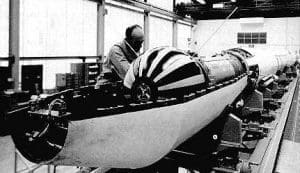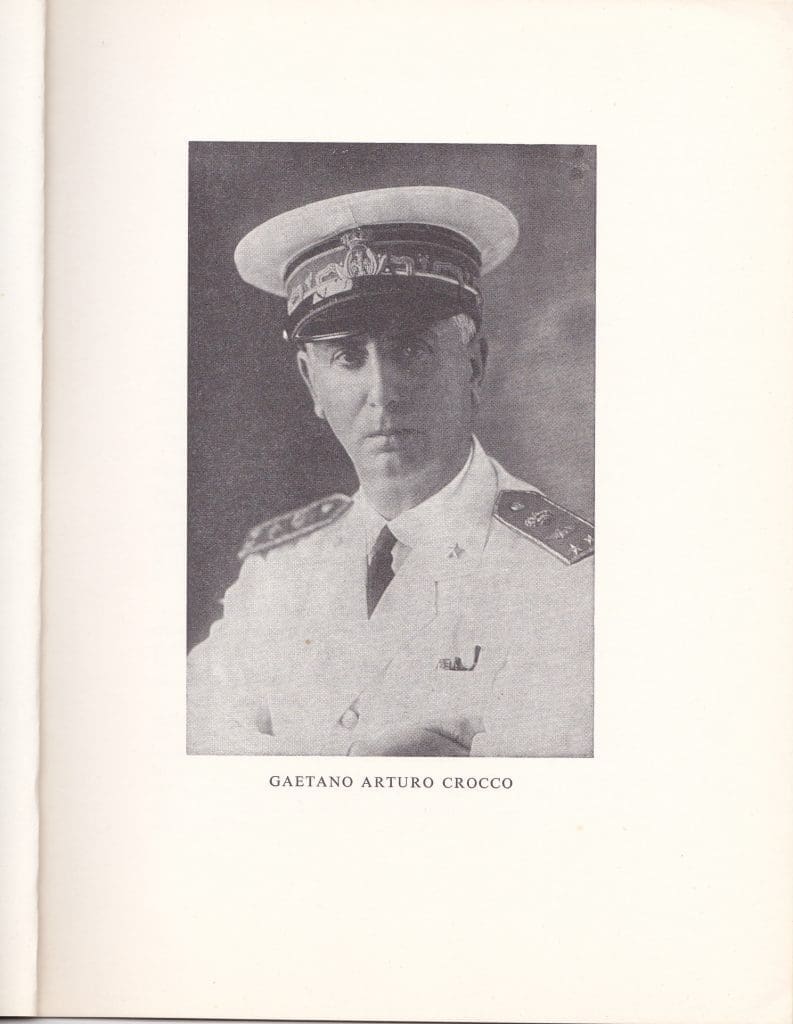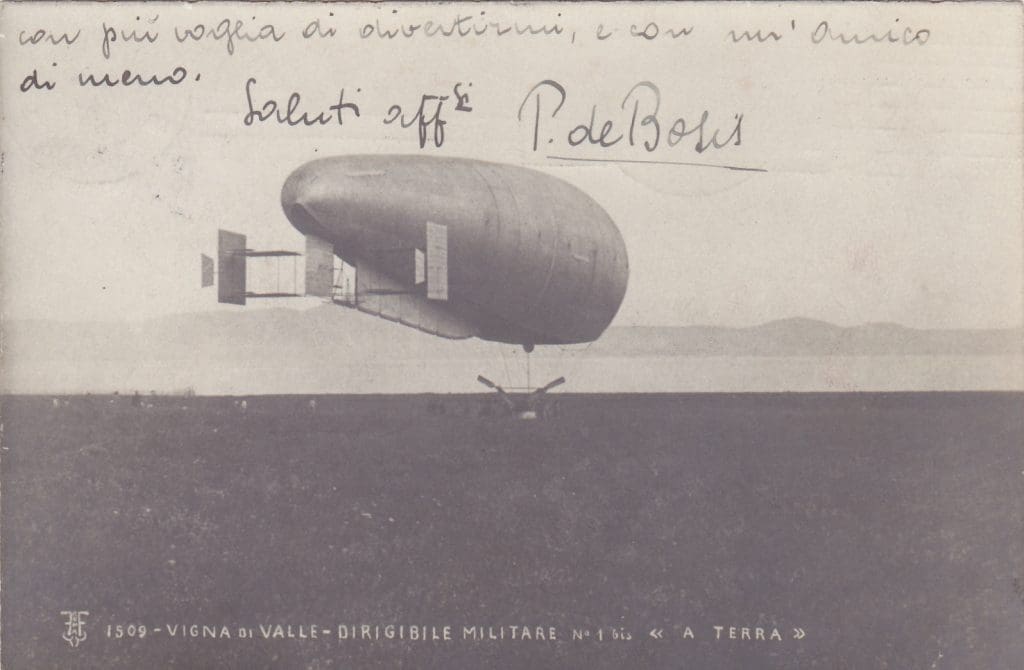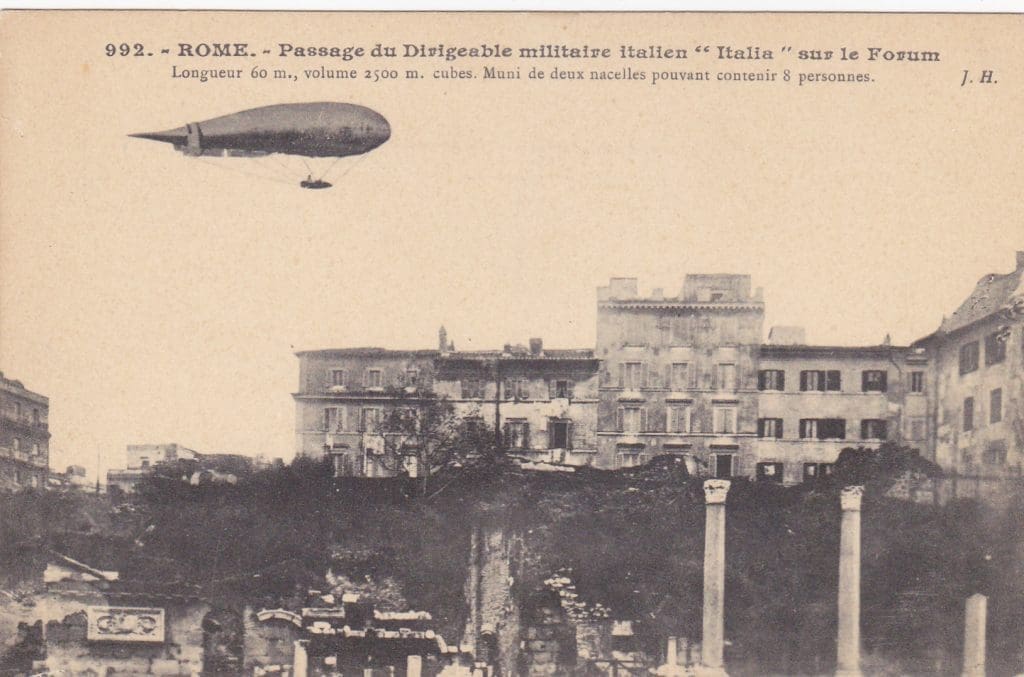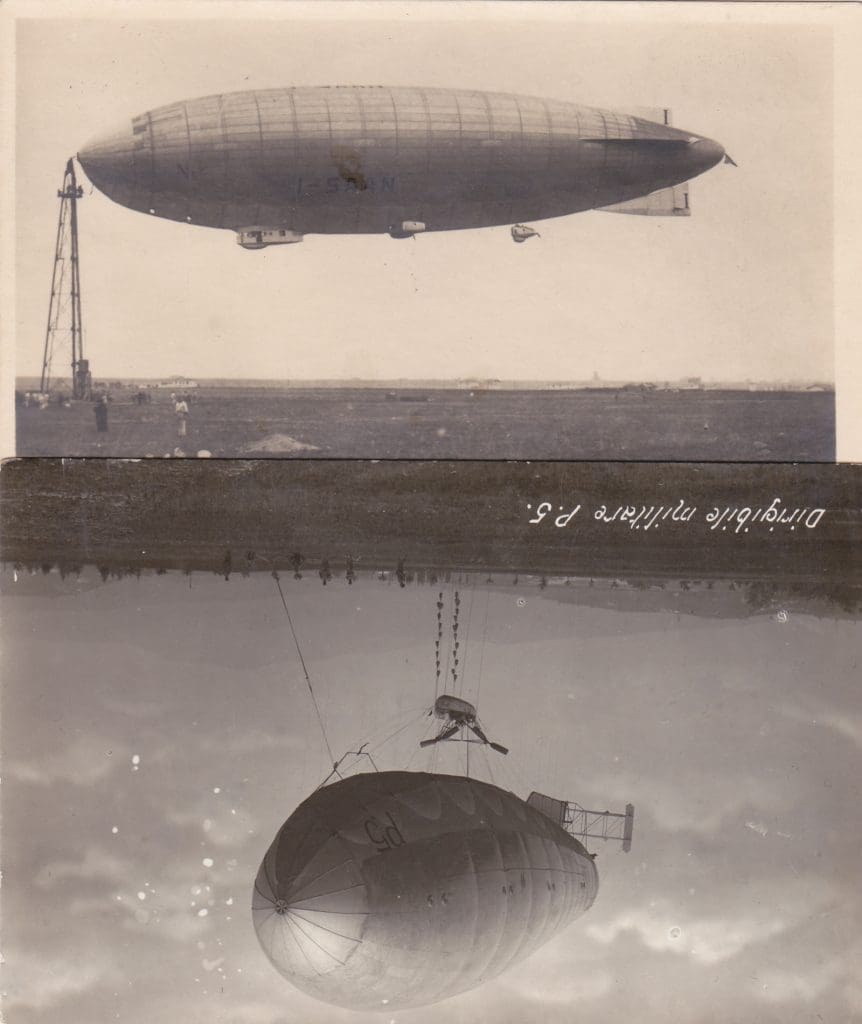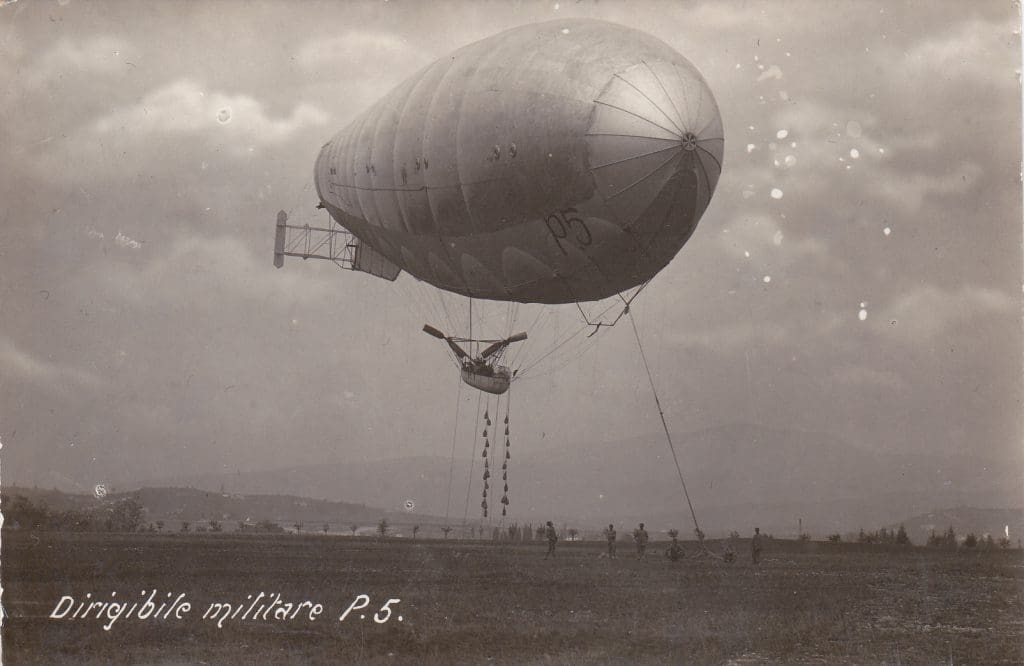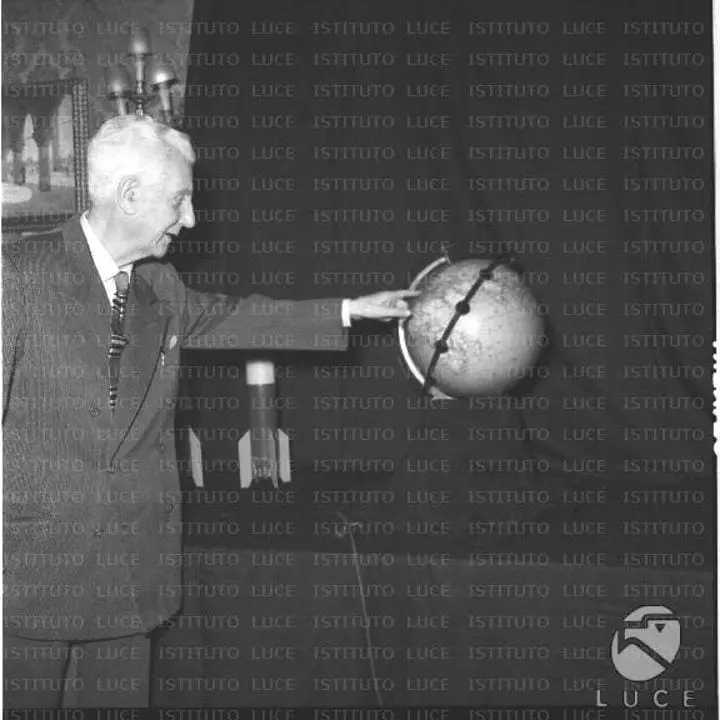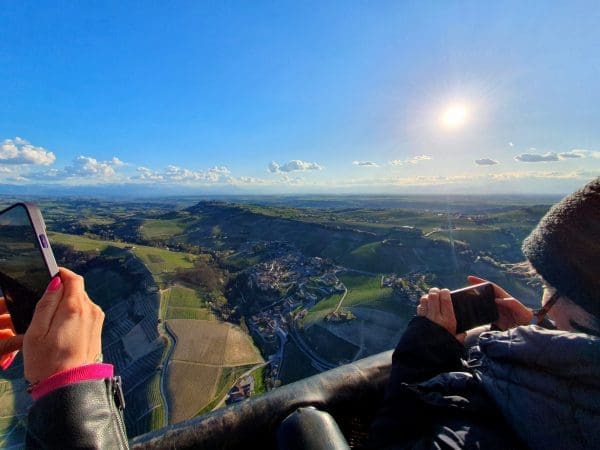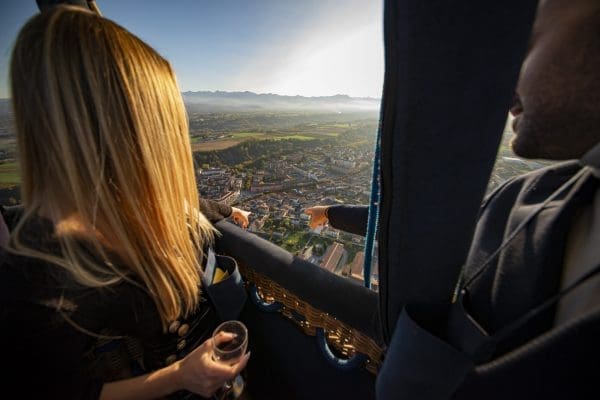Gaetano Arturo Crocco (Naples 1877- Rome 1968) is a character unknown to most, but in our opinion it deserves great attention and his memory should be cultivated by all fans of flight and science in general. In fact, perhaps no other scientist has had the opportunity to cross all the epochs of flight history more than Crocco. It was born when the first airship had not yet been manufactured and died after planning for NASA the launch of a probe destined to enter the orbit of Mars. His long life was thus crowned with great success. Brilliant student of mathematics and physics at the university of Palermo, after a few years he started his military career, entering the School of Application of Artillery Genius, from which he left in 1900 with the rank of lieutenant. He was immediately hired by the Specialist Engineers Brigade, directed by Captain Maurizio Mario Moris (in the chronicles of the time sometimes erroneously referred to as Morris), where he received the task of studying telecameras to be used on board balloons. In short, Moris entrusted him with increasingly delicate tasks, and soon appointed him as his main collaborator.
After some experiences in Liège and London, the young Crocco returned to Italy, where he devoted himself to mathematical studies of the oscillations of boats , Suggesting good solutions to the problem which would have been needed some decades later for similar projects on attenuating turbulence perceived by aircraft. In 1900, when he was very young, Crocco married the noblewoman Bice Licastri dei Baroni del Piraino, who supported him throughout his long life, also supporting his studies and compiling several memoirs on the aeronautics of the time. Ms Crocco is also considered to be the first Italian woman to fly in a blimp, in the sky of the Capital, probably aboard the airship 1bis, taking off from the center of Vigna di Valle, on Lake Bracciano, still today home to the Aeronautics Museum. Contends this record to the queen Margherita, who according to some chronicles, would have flown on board the airship manufactured by Almerico da Schio in 1905.
It was certainly in the field of steering that Crocco obtained the most flattering results. It is considered to be one of the The fathers of the Italian school of the semi-rigid airship. If the Germans of the Zeppelin devoted themselves to the design of large airships with rigid structure, Crocco, noting how this type of dirigible manifested a certain fragility in case of lateral winds, frequently arriving at the stress rupture of the great load-bearing beams, found the surprising solution to the problem. Famous his phrase, remembered by one of his collaborators, the coeval Ottavio Ricaldoni and following to one of the flights of the airship 1bis: "I have found a way to prevent the basic beam of the large airships from breaking... I will break it first!" (this action was called "warping"). In fact, the concept of Crocco was based on the articulated beam, that is on a beam that would make the semi-rigid aircraft, inaugurating the Italian school of the airship, which led to the realization of thirty airships. Many other scholars and scientists followed his theory, making aircraft ever larger and more efficient: we cite among others Forlanini, Nobile and Usuelli. With this last Crocco designed a semi-rigid airship of 120,000 mc of volume, the T120, where "T" stood for "transatlantic", as the makers thought to use it with passengers on long-haul routes, The sudden and premature death of Usuelli in a car accident did not allow the project to be carried out. The Neapolitan engineer is thus considered the father of the Italian military airship, an aircraft that would have collected great records, Including the perhaps not particularly edifying of being the first flying vehicle in the world used for aerial bombardments during the Italo-Turkish war in Libria, in 1911.
In addition to studies on the lighter air, in the first decades of the century, with the affirmation of the airplane, "heavier than air", Crocco made innovative studies already in 1911 also on the propellers, realizing the "rotary explorer", a device studied in one of the first wind tunnels, by him in 1905 in Rome at the Cavour barracks and intuiting the principle of autorotation, Safety guarantee also for modern helicopters that in case of engine failure can glide like a gyro. Another invention of Crocco was the "hydroglider" a prodrome of the hovercraft, which he experimented on the lake of Bracciano, also following the ideas of another great designer of the time, Enrico Forlanini. On the day after one of the first flights of the military airship, the newspaper of 31 October 1908 published the news: "The triumph of the Italian military genius. The first Italian airship flies in the sky of Rome. From Bracciano to the Quirinal in 32 minutes!". The event took place under the eyes of the citizens of the capital, as one of the postcards that we present here recalls. The airship was called "Italy", it was 60 meters long, had a volume of 2500 mc and could carry up to 8 people. At that time, Crocco and Ricaldoni, the designers, builders and test pilots of the aircraft had the rank of captain.
As we said at the beginning of this article, Crocco did not limit itself to the study and manufacture of airships, but from the thirties on he devoted his attention to the analysis of the behavior of aircraft at high speeds and high altitudes, making innovative aerodynamic studies, up to the Astronautics and Missile. In 1935 he organized and directed a symposium, the "V Volta Congress", whose theoretical conclusions are still taken into account. In the last decades of his long life he became a consultant to NASA, by correctly planning and calculating the trajectories that a probe would have to complete in order to reach Mars. In addition, Crocco came to understand the principles of ionic propulsion and conceived the construction and use of large orbital stations that could also serve as a launching pad for the exploration of the Solar System. He died in January 1968, just before man set foot on the moon.
Crocco’s aeronautical intuitions led him to a wide-ranging career in the military, eventually leading him to the rank of general. The Neapolitan designer published in his life over 170 books, essays and reports, giving countless conferences and achieving international fame. His personal archive was bought in bulk by Timina Caproni Guasti and her daughter Maria Fede, who kept it for 60 years in the great villa of Venegono. For one of the "miracles" of our bureaucracy, currently the archive, composed of thousands of documents and diaries, is in custody at the Superintendence of Trento, where its vision is closed to anyone, waiting for restoration and cataloging, although Maria Fede Caproni had officially donated to the Air Force around 2015.



